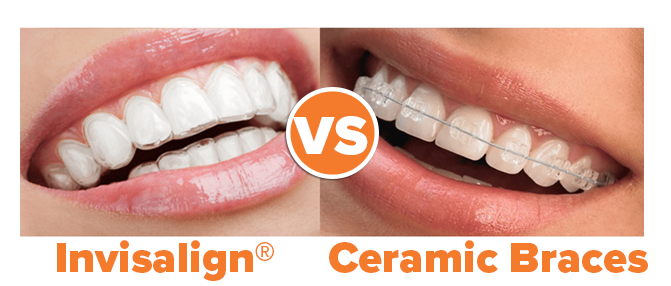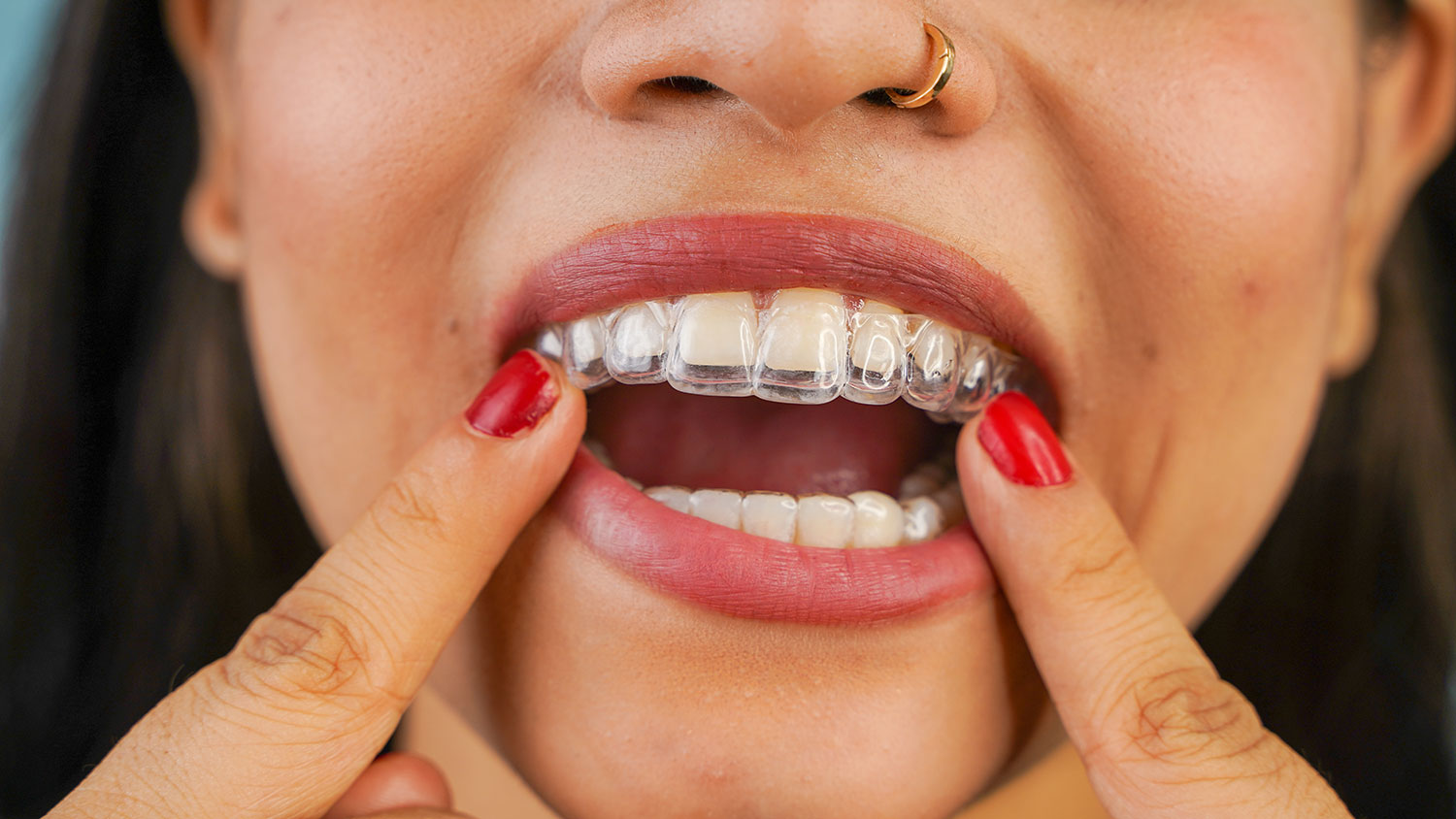Success Stories: How Invisalign Changed Lives and Enhanced Confidence
Success Stories: How Invisalign Changed Lives and Enhanced Confidence
Blog Article
Invisalign vs. Conventional Dental braces: Which Alternative Is Right for You?
When considering orthodontic therapy, the selection in between Invisalign and standard braces presents numerous vital aspects that warrant cautious assessment. Invisalign offers a very discreet choice with removable aligners, while conventional dental braces give a much more visible yet reliable remedy for serious misalignment.
Overview of Therapy Choices

In comparison, traditional dental braces contain metal brackets and cords that are bonded to the teeth. This technique uses continuous pressure with time to accomplish positioning. While effective for complicated orthodontic concerns, traditional dental braces require routine sees for modifications and can pose difficulties in keeping dental hygiene due to the problem of cleansing about braces and wires.
Both choices have their qualities, and the choice frequently depends upon details oral conditions, lifestyle preferences, and individual conformity. Inevitably, consulting an orthodontic professional is important for establishing one of the most ideal therapy strategy customized to specific demands. Understanding the nuances of each choice can dramatically affect the total success of orthodontic treatment.
Visual Factors To Consider
A considerable element influencing the selection between Invisalign and traditional dental braces is the aesthetic allure each therapy provides. Invisalign aligners are crafted from clear plastic, making them virtually unseen when used.
On the other hand, standard braces contain metal braces and wires, which can be extra visible. While advancements in orthodontic innovation have caused the development of smaller sized brackets and tinted elastics, traditional braces still keep a more obvious profile. For some people, the visibility of braces might discourage them from looking for required therapy.
Eventually, the selection in between Invisalign and traditional dental braces might hinge on individual choices relating to appearances. Clients that prioritize discretion often lean toward Invisalign, while those that are much less worried about exposure might select conventional dental braces. Recognizing the visual implications of each choice is critical for making an informed decision that lines up with one's way of living and choices.
Comfort and Convenience

In terms of convenience, Invisalign aligners are removable, enabling people to appreciate their favorite foods without constraint and preserve ideal oral hygiene. Cleaning and flossing are streamlined, as the aligners can be secured during these routines, whereas traditional braces require careful steering around cords and brackets.
Additionally, Invisalign's dynamic system permits fewer orthodontic visits. People generally obtain several collections of aligners simultaneously, which can improve the therapy process and lower time spent in the orthodontist's chair. On the other hand, standard braces require regular modifications, making them less hassle-free for those with busy schedules. Invisalign. On the whole, the comfort and ease of Invisalign make it an attractive selection for numerous people seeking orthodontic treatment.
Treatment Period and Performance
While both Invisalign and conventional dental braces work in remedying oral misalignments, the period of therapy can vary dramatically between both options. Typically, Invisalign therapy can take anywhere from 12 to 18 months, depending upon the intricacy of the case. The clear aligners function by gradually moving teeth right into their preferred placements, and regular follow-ups with an orthodontist aid ensure progression continues to be on the right track.
On the other hand, conventional dental braces usually call for a longer dedication, usually ranging from 18 months to three years. This is due to their fixed nature and making use of wires and brackets, which can be much more efficient for complicated situations and severe misalignments (Invisalign). The treatment efficiency of conventional braces is well-documented, as they enable accurate adjustments and greater control over tooth activity
Inevitably, the selection in between Invisalign and conventional braces may pivot on both the awaited therapy duration and the particular dental concerns handy. Consulting with an orthodontist is vital, as they can supply tailored recommendations based on specific demands, making certain the picked technique aligns with wanted end results and timeframes.
Price Comparison and Insurance Policy Choices
Expense plays a considerable role in the decision-making procedure for individuals thinking about orthodontic treatment, whether deciding for Invisalign or read the full info here standard dental braces. Generally, the price of Invisalign arrays from $3,000 to $8,000, while standard braces normally cost More hints in between $2,000 and $6,000. Aspects influencing these expenses include the intricacy of the case, the period of treatment, and geographical place.
Insurance insurance coverage can substantially impact out-of-pocket costs. Many oral insurance strategies provide partial protection for orthodontic therapies, however the specifics can differ widely. It is vital for clients to assess their insurance plan to identify the degree of coverage for either choice. Usually, conventional dental braces might be much more often covered by insurance policy plans contrasted to Invisalign, which some insurance providers classify as an aesthetic procedure.
Furthermore, numerous orthodontic techniques offer flexible layaway plan, making both treatment choices a lot more accessible. Patients ought to ask regarding prospective funding choices and price cuts for ahead of time payments. Evaluating the overall expense, consisting of insurance policy advantages and payment plans, is crucial for making an educated choice that straightens with both visual choices and budget plan considerations.
Verdict
In recap, the selection in between Invisalign and standard braces rests on multiple elements, consisting of aesthetic preferences, comfort, therapy period, and expense. Invisalign uses a discreet, removable alternative that promotes dental hygiene and dietary flexibility, while traditional dental braces might be better for intricate oral problems and typically come at a reduced cost point. Ultimately, consultation with an orthodontist is necessary to analyze private situations and determine one of the most suitable treatment alternative for accomplishing optimal oral positioning.
When considering orthodontic therapy, the option between Invisalign and typical braces offers a number of important variables that merit careful examination.Contrasting Invisalign and traditional dental braces exposes distinctive treatment alternatives for orthodontic adjustment.While both Invisalign and conventional dental braces are efficient in correcting dental imbalances, the duration of therapy can differ substantially between the two alternatives.Expense plays a substantial role in the decision-making procedure for individuals thinking about orthodontic therapy, whether opting for Invisalign or typical braces.In summary, the selection between Invisalign and standard dental braces hinges on numerous elements, consisting of visit their website aesthetic preferences, convenience, therapy duration, and expense.
Report this page